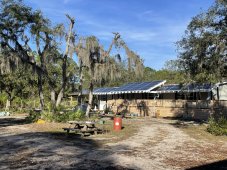Hi all:
After tree trimming I'm still getting some shade across my only roof location for installing my solar modules. Amount of shade comes and goes as the sun moves but always some amount.
I thought I could install modules with power optimizers to limit issues with shade on one or multiple modules so as not to limit the whole module series but I was told by Signature Solar that optimizers can't be used with the EG4 6.5kW 6500EX-48 (which I have pre-orderd 2 units already).
Would you change inverters to the Growatt stackable inverters and use power optimizers which will likely add another $2500+ to my cost.
Both roof areas already point East & West and with varying shade I want to maximize my available output but just didn't realize not all inverters will work with power optimizers.
Appreciate any advice and input.
Attached is my planned roof module layout.
Regards, Scott
After tree trimming I'm still getting some shade across my only roof location for installing my solar modules. Amount of shade comes and goes as the sun moves but always some amount.
I thought I could install modules with power optimizers to limit issues with shade on one or multiple modules so as not to limit the whole module series but I was told by Signature Solar that optimizers can't be used with the EG4 6.5kW 6500EX-48 (which I have pre-orderd 2 units already).
Would you change inverters to the Growatt stackable inverters and use power optimizers which will likely add another $2500+ to my cost.
Both roof areas already point East & West and with varying shade I want to maximize my available output but just didn't realize not all inverters will work with power optimizers.
Appreciate any advice and input.
Attached is my planned roof module layout.
Regards, Scott



